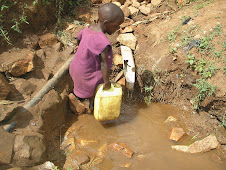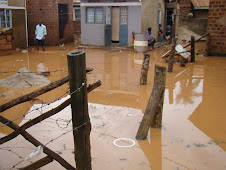Summary of Teo’s findings in her recent research
Solid waste management is increasingly becoming the biggest problem in many urban centres of the world and Kampala is no exception. Research results in this report are from a study on the challenges of solid waste management in Rubaga and Kawempe Division. The research mainly focused on domestic solid waste. The three objectives that guided this research were; determining the characteristics of solid waste being generated in Rubaga and Kawempe, solid waste management practices and challenges to solid waste management in Rubaga and Kawempe division. The research made use of both qualitative and quantitative methods and techniques in sampling, data collection and data analysis during this study. The qualitative data collection techniques included; in-depth interviews and focus group discussions where as the quantitative data collection techniques included the use of self administered questionnaires and weighing of the generated wastes to ascertain the biodegradable and non-biodegradable wastes. Quantitative data was analyzed using the Statistical Package for Social Sciences (SPSS) and both qualitative and quantitative data has been merged to produce this report.
The most predominantly generated solid waste types in Rubaga and Kawempe Division are mainly food related such as peelings (banana, cassava, and potato peelings (66.1%), plastics (5.7%), dust and sweepings (9.1%), Debris (11%), paper (3.7%), metal and glasses (1.5% and 0.7% respectively) and others (2.2%) in Kawempe division. In Rubaga division, 63.6% of the generated waste was organic, plastics6%, dust and sweepings 12%, debris 10%, paper 4%, metals and Glass (1.4% and 0.6% respectively and others at 2.4%.. The results also indicated that the management practices employed in solid waste management in Rubaga and Kawempe division mainly included open dumping (62%) along road sides (61.3%) and in channels (65%), burning (11.3%), recycling (9.3%) and composting at (7%).
The main challenges to solid waste management include; absence of central designated sites for waste dumping (86.7%), inconsistency in waste collection by the responsible firms for example NOREMA and ESCOM (42%), insufficient funds to fuel vehicles for transporting solid wastes (40%), increasing population density (37%) and less involvement of communities in solid waste management (30%). The adaptable solutions to the identified challenges include mass sensitization with emphasis on garbage sorting, re-use, recycling and strengthening of waste collection as a way of conserving the environment for the benefit of the present and future generation.
Subscribe to:
Post Comments (Atom)









































challenges of solid waste disposal are much more, but what solutions can we have? some options may be; -privatization of solid waste management and strengthening constant monitoring by government.-Emphasis on recycling, reuse and reduction of solid waste can also help.
ReplyDeleteAll sorts of dust, molds, and other illness causing nastiness will often be hidden when junk begins to pile up in your home. Add to that the danger of junk being piled up in a not so orderly way and you may have a disaster waiting to happen. Junk removal Thousand Oaks
ReplyDelete